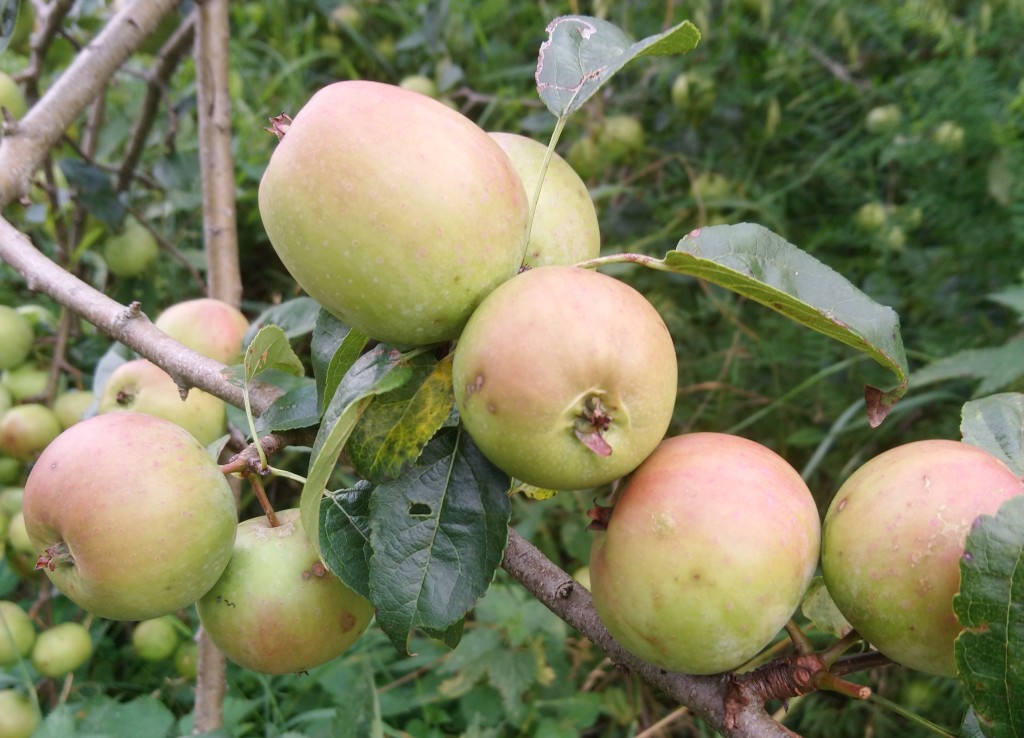
[220] Malus domestica, Apple
Introduction
Malus domestica, the (Common, Domestic or Orchard) Apple, is a very common and widespread tree cultivated for its fruits that are called apples. They may be called eating apples or cooking apples and are generally sold as named varieties. There are about ten thousand named varieties and cultivars.
Other species of Malus may be called apples but are generally called crabapples (or crab-apples or crab apples) or wild apples. Several of these wild species may be found in Britain, especially Malus sylvestris, the Crab Apple.
I will also consider the Pear and some other close relatives.
Taxonomy
Kingdom – Plants
Division – Vascular Plants
Class – Angiosperms (Flowering Plants)
Order – Rosales
Family – Rosaceae
Subfamily – Amygdaloideae
Tribe – Maleae
Subtribe – Malinae (Includes Pear, Quince, Rowan, Firethorn, Photinia and Hawthorn)
Genus – Malus
Scientific Name – Malus domestica
There are thousands of cultivars. Some more traditional varieties such as Cox’s Orange Pippin, Bramley and Granny Smith are still available but the modern cultivars have been bred to produce fruits of consistent shape, size, colour and taste.
Name
The word apple, derived from Old English, was used as late as the Seventeenth Century to refer to all fruits other than berries, but including nuts. For example, the banana in Middle English was called an apple of paradise. The word pineapple originally meant a pine cone and is still used in heraldry with that meaning.
Malus is the Latin name for the tree from Ancient Greek roots. It looks masculine but is actually feminine – hence domestica, not domesticus.
Description
Malus domestica is a fairly small deciduous tree but is usually cultivated by being grafted on to a rootstock.

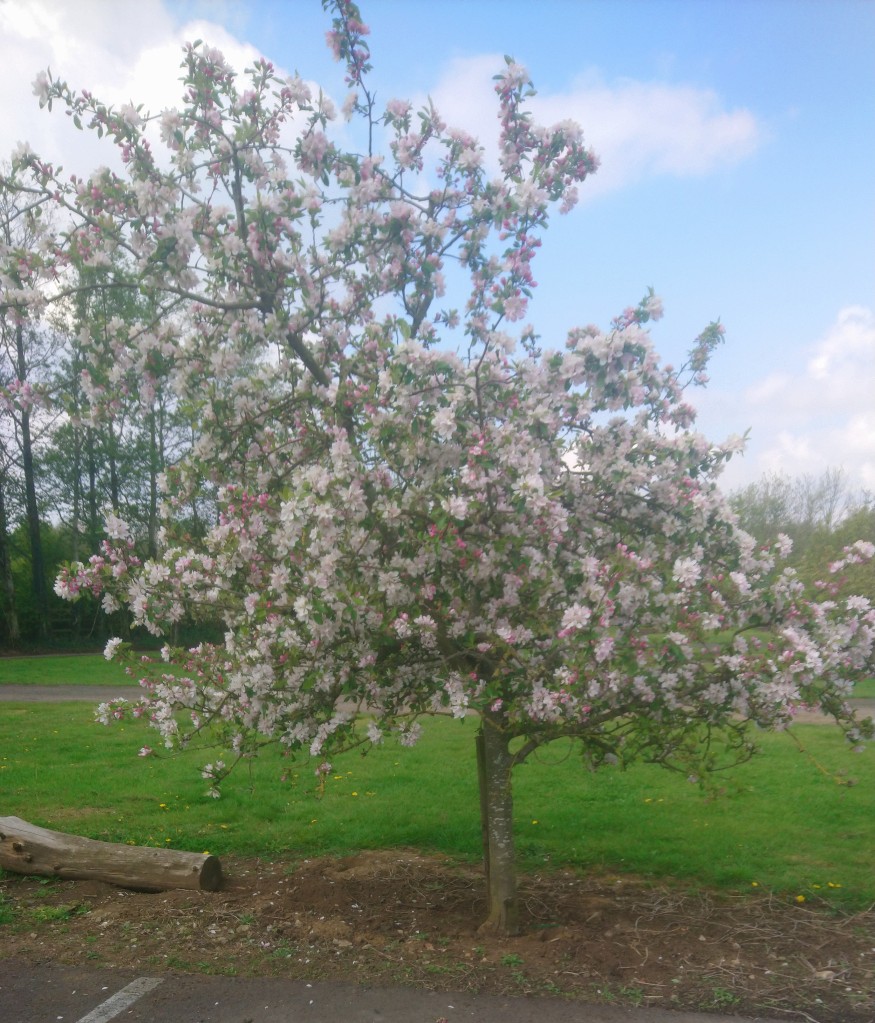
The wild crab apple, Malus sylvestris, is more like a straggling shrub.
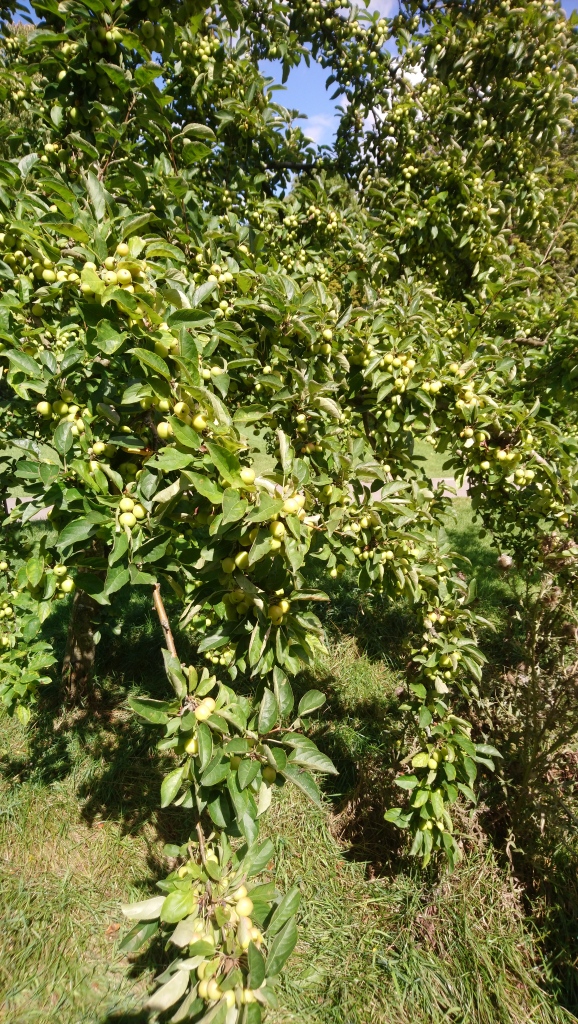
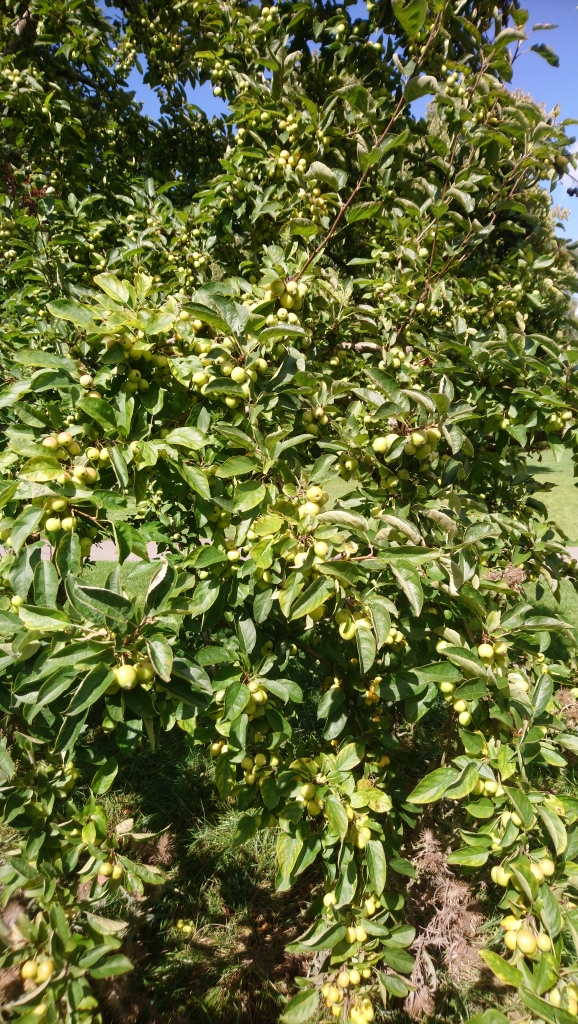
The five-petalled white flowers emerge from buds that are initially pink.
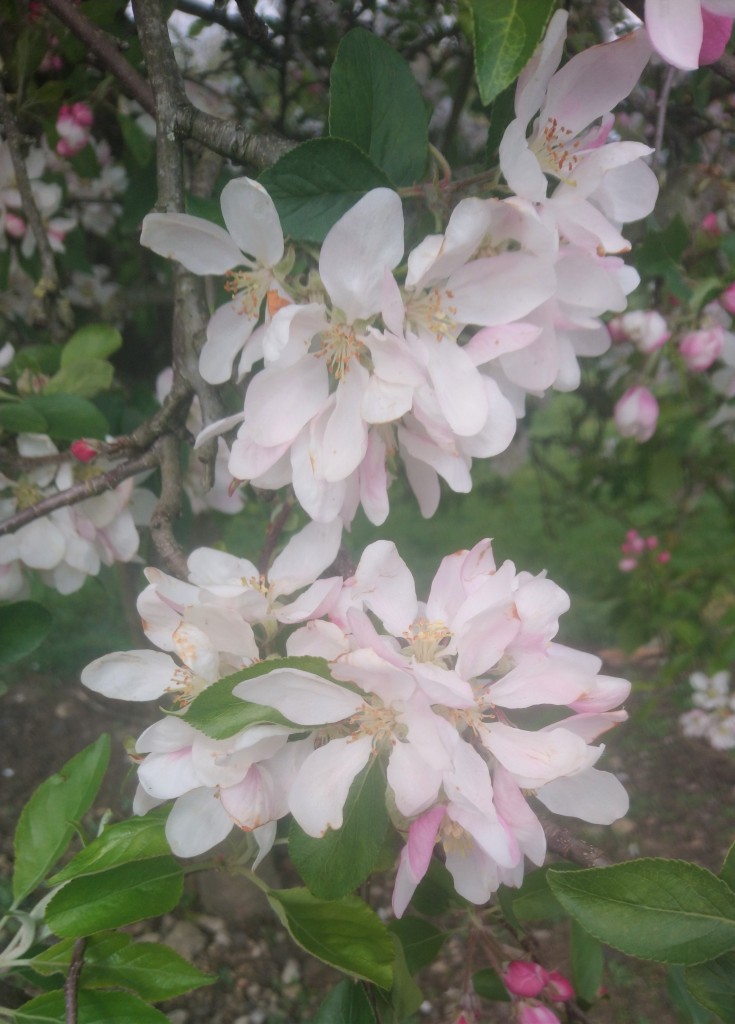
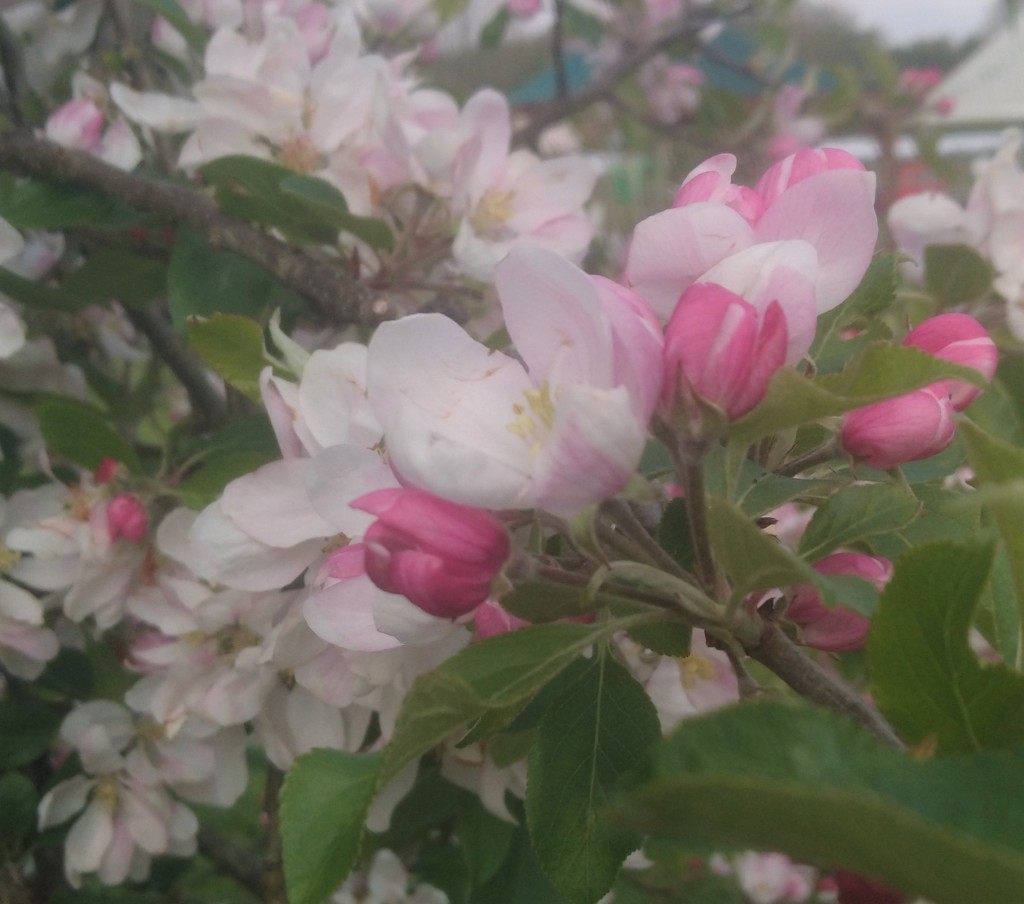


[You may notice a Hoverfly, Eristalis pertinax, in the last picture. See [333] Hoverflies.]
As you remember what I said in [101] Cotoneaster about the subtribe Malinae, their fruits are technically pomes. For most of these species we can think of pomes as like berries but the fruit of the Apple (and Pear and one or two others) is much larger, even for non-domesticated varieties.



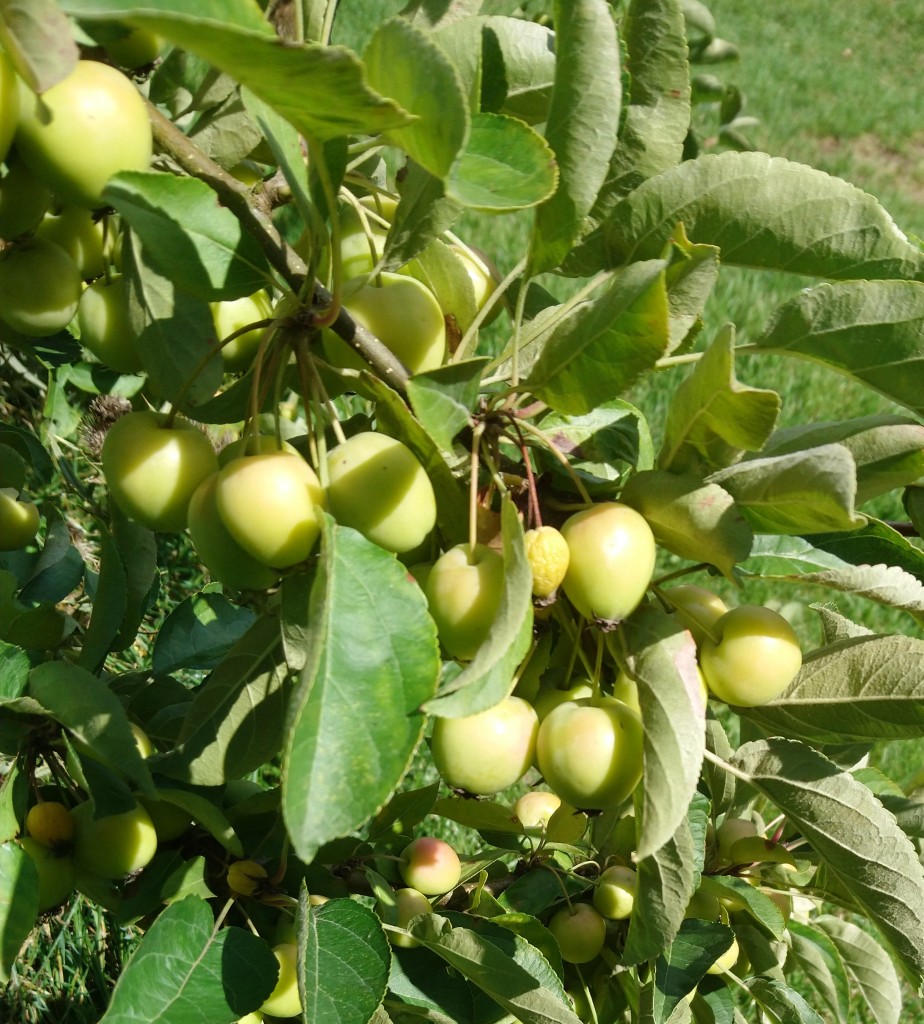


Habitat and use
Apples originated in Central Asia and have developed from a wild ancestor, Malus sieversii, with some hybridisation of others including Malus sylvestris. They have been cultivated for their fruit for thousands of years across Europe and Asia and later in North America.
The fruits have many uses – for eating raw, in cooking, for making apple juice and to produce the alcoholic drink cider. The many different varieties may look red, yellow, green, brown or russeted (rough and brown) – sometimes two or three colours. the flesh of the fruit is generally yellowish white, but may be pink or yellow for some varieties.
There are many references to apples in folklore and mythology. As this will be a long blog, I will mention just two.
In Greek mythology, Atalanta raced all of her suitors to avoid marriage and generally outran them. But Hippomenes, also known as Melanion, who knew that he could not win by speed, used three golden apples (gifts from Aphrodite) to distract her and win.
From the Book of Genesis in the Bible, which I always quote in the Authorized Version, we read….
- Now the serpent was more subtil than any beast of the field which the Lord God had made. And he said unto the woman, Yea, hath God said, Ye shall not eat of every tree of the garden?
- And the woman said unto the serpent, We may eat of the fruit of the trees of the garden:
- But of the fruit of the tree which is in the midst of the garden, God hath said, Ye shall not eat of it, neither shall ye touch it, lest ye die.
- And the serpent said unto the woman, Ye shall not surely die:
- For God doth know that in the day ye eat thereof, then your eyes shall be opened, and ye shall be as gods, knowing good and evil.
- And when the woman saw that the tree was good for food, and that it was pleasant to the eyes, and a tree to be desired to make one wise, she took of the fruit thereof, and did eat, and gave also unto her husband with her; and he did eat.
- And the eyes of them both were opened, and they knew that they were naked; and they sewed fig leaves together, and made themselves aprons.
- And they heard the voice of the Lord God walking in the garden in the cool of the day: and Adam and his wife hid themselves from the presence of the Lord God amongst the trees of the garden.
- And the Lord God called unto Adam, and said unto him, Where art thou?
- And he said, I heard thy voice in the garden, and I was afraid, because I was naked; and I hid myself.
- And he said, Who told thee that thou wast naked? Hast thou eaten of the tree, whereof I commanded thee that thou shouldest not eat?
- And the man said, The woman whom thou gavest to be with me, she gave me of the tree, and I did eat.
- And the Lord God said unto the woman, What is this that thou hast done? And the woman said, The serpent beguiled me, and I did eat.
It’s a deeply symbolic tale, often taken as explaining original sin, and I can hear you asking “What has this got to do with apples?” Well, so much folklore and mythology gets modified over the years and the story of Adam and Eve is almost always told as involving temptation to eat an apple, although the origin text talks of ‘the fruit of the tree in the midst of the garden.’ Perhaps the confusion dates from the time when ‘apple’ had a more general meaning.
[In much the same way, the traditional story of Christmas Nativity normally talks of the visit by the Three Kings, Caspar, Balthazar and Melchior, where the original text, which only appears in one of the Four Gospels, merely mentions an unknown number of ‘wise men.’]
Other Notes
You may have to go to orchards or specialist gardens to find Malus domestica, although it is sometimes cultivated in ordinary domestic gardens. It’s the sort of tree that you won’t notice until the autumn when the fruit will make it obvious.
See also
- Pyrus communis, the (European) Pear, is also from the subtribe Malinae. It is tree, widely cultivated for its familiar fruits called pears. There are many cultivated varieties, of which some, but not all, have the familiar pear shape. Other varieties look like apples. Some of the other species of Pyrus are also cultivated for their fruits. Pears can be eaten raw or used for jam or juice; as a flavouring; or to make a kind of cider called perry. Its wood is used especially for woodwind musical instruments as it does not warp. (The word pear comes via Germanic from Latin pirum or pyrus, from Greek roots probably originally meaning fruit.)


- Cydonia oblonga, the Quince, native to Western Asia, has been historically cultivated since before the spread of Apples. It was associated by the Greeks with the ancient Kingdom of Cydonia on the island of Crete. It is still cultivated in relatively small quantities and has a number of cultivars. (Quince, from Middle English is derived ultimately from the Latin Cydonia, and is cognate with Cotoneaster!)
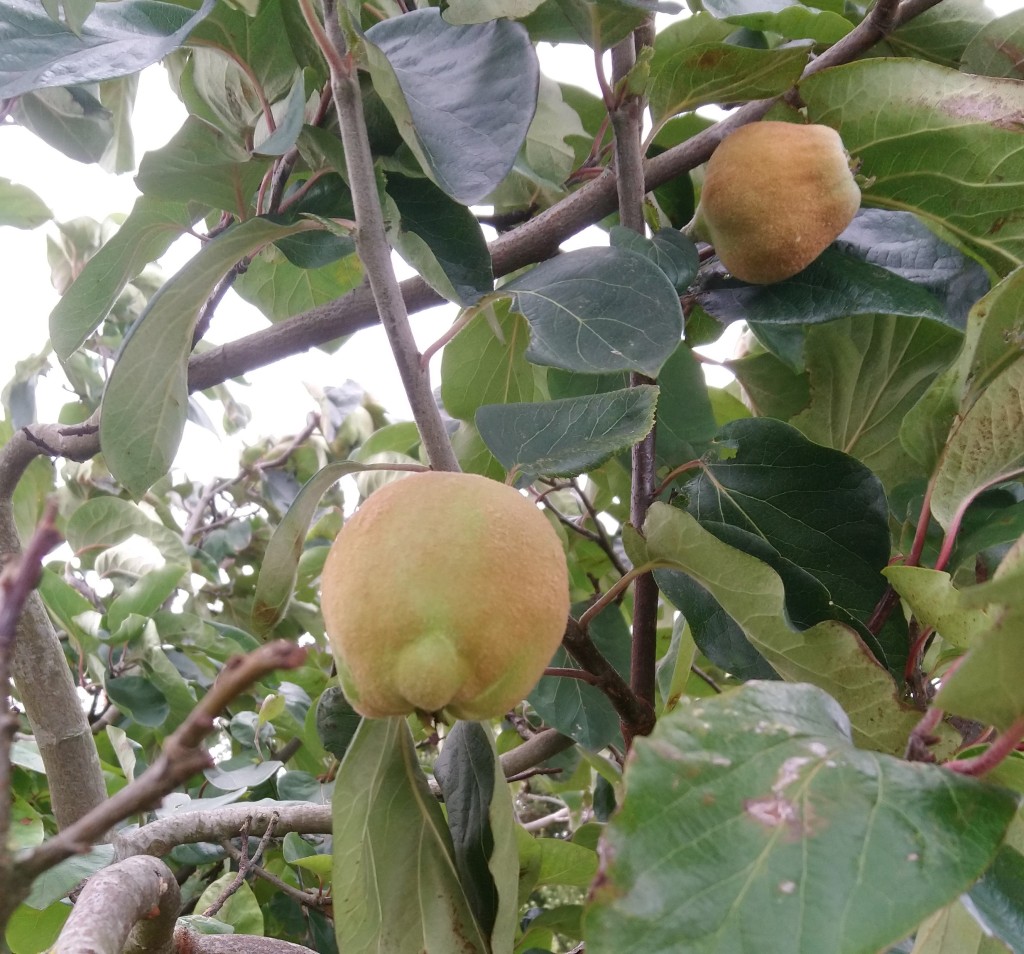
- Chaenomeles speciosa, Chinese Quince (not to be confused with Pseudocydonia sinensis, also called Chinese Quince, much more like Cydonia); and Chaenomeles japonica, Japanese Quince, are grown as ornamental garden plants for their red flowers. Hybrids and cultivars are available. (Chaenomeles from Ancient Greek khaino-melon, means ‘gape apple.’)


[[I won’t mention Edna Krabappel.]]
